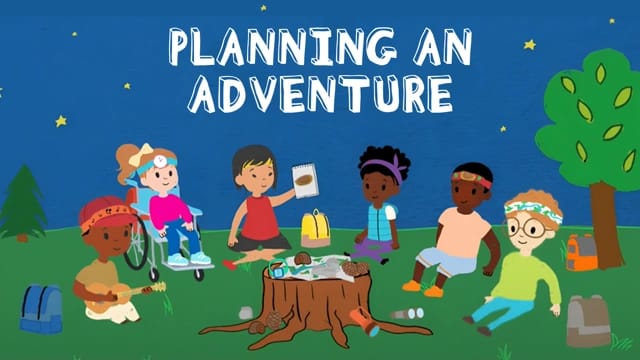10 Random acts of kindness ideas for students
In this guide
How can students show kindness to others?
No matter what year group I taught over the years (it ranged from year 2 to year 9), I tried to encourage students to be kind to each other, to me and themselves. That’s because it’s important for students to understand that kindness goes a long way.
Although I tried to implement this concept all throughout the year, you could really focus on it on Random Acts of Kindness Day in February, and even World Kindness Day, which is in November.
Here is a list of activities that can be used at any time of the year.
1) Locker notes

If you teach in a school that has lockers (typically secondary school), this is a sweet way to spread kindness throughout your building. And all you need are sticky notes and affirmations. Here is what I did:
- To begin, I started a general discussion with them about kindness. In particular, I focussed on how you never know who is having a hard time and could really use some words of affirmation.
- Ask students to share examples of words or phrases they find encouraging (e.g. You’re important, You’re loved, Have a great day, etc.).
- Give each student a stack of sticky notes and have them write encouraging words and phrases down.
- If you have time (and the willingness to have your class in the corridor), you can allow them to go stick the notes on lockers. You could send a few out at a time, or the entire class. That way, they can feel like they are the ones making the impact. Be careful: This will require a lot of monitoring in the corridor, but it’s totally worth it.
2) Classwide sticky notes

This is similar to Locker Notes, but just within your class. The goal is to show kindness to each student in their class family.
Here’s how I have seen this done:
- Label each desk with painter’s tape (or if they already have name tags), and then spread out a bunch of sticky notes on each desk. Or, have one large piece of paper on each desk.
- Have students walk around the room, and write kind words to people in their class. They don’t have to make it to every desk, but you could certainly give them a goal, depending on time (perhaps 10-15 desks).
- When you feel all students have received messages, you can send students back to their seats, to read their notes and keep them as kind reminders.
Note: It’s important that you keep a close watch on this activity. You want to make sure the notes are appropriate, and that every student is receiving notes. I have been known to pre-write some messages and place them on desks if I felt it was needed.
3) I like _______ because _______

This is a variant of the Classwide sticky notes. It has a similar goal of showing kindness to the students in your class family. But the difference is that you focus on one student at a time. I recommend this for upper primary and above.
The idea here is to get everyone in the class to say nice things about one particular student. The entire focus is on one specific student, which is a practice in the concept of “it’s not about you right now”.
The way I’ve seen this done is:
- Hang a large piece of paper (butcher paper, chart paper, poster board, etc.) on the whiteboard, or pushpin it to a bulletin board.
- At the top of the paper, write “I like (student name) because…”
- Have the student sit in a chair or desk with their back to the paper.
- Have the rest of the students take turns coming up and writing compliments on the paper. When all of the students have come up and written a message, let the chosen student turn around and read what was written. And then they can take their poster home. You can tell them to read it as a reminder of how important they are in the class.
Note: I would obviously observe this closely. You want to make sure that the students write kind words, and nothing inappropriate. It would be helpful to give the class suggestions of the types of compliments/nice words they could write (e.g. “you helped me prepare for the maths test”, “you are really funny”, “you’re a great friend”, “you’re always nice to me”, etc.).
Depending on the structure and timing of your class, you might be able to do more than one student on the same day. I have seen some teachers dedicate time every Friday to do this until every student has been done.
4) Help teachers

This is just like it sounds. You could email your staff in advance, and offer to send a pair of students either during their prep, lunch, or after school, whatever works for your school and timeframe.
With my year 9 leadership class, I would send out a signup form, and teachers could request help and how many students they needed.
These tasks could include: sharpening pencils, checking if markers have dried up, stapling something, cutting things out, putting papers on a bulletin board, taking out their recycling, taking something to another teacher, etc. You get the idea. Teachers might even have some of their own ideas of what they need help with.
I received a lot of positive feedback from teachers about this. They were so grateful for the extra help, and they were often impressed by the responsibility that my students showed.
I will say that this does take some legwork on your part. It’s vital that your students are trustworthy and will make good decisions. It’s also important that you explain in detail how they are to behave and what is expected of them.
But, it can be so rewarding for those kids. They love to feel important, and they get an opportunity to show kindness to others.
5) Treats for community

This could be done just within your classroom, or schoolwide. The idea is that you deliver treats to the people in your community.
There are a lot of parts and pieces to this one, I won’t lie. You will need to do the following:
- Decide who you’re going to give the treats to e.g. a nursing home? Firefighters? Police?
- Coordinate with that group on the details
- Communicate with the student’s parents in advance and give them very specific instructions on what they can donate (most likely, it will need to be store-bought)
- Figure out a way to get the treats to them i.e. Will parents help? Will you take them yourself?
This is a lovely way for your students and school family to show kindness to those living in your community.
6) Send cards to troops

Another way to do something nice for people in the community is to think bigger, and send cards to the troops.
There are many organisations out there that can provide you with a specific military unit that is deployed somewhere in the world. One example is AdoptaPlatoon. They can also provide you with instructions on how and where to send the cards.
Once you have a group, your students can write messages and cards, to show love for them. It could be as simple as just telling them to be safe and someone is thinking of them. As a former military wife myself, I know firsthand how much soldiers really appreciate messages like this.
And you might even get lucky enough to hear back from some of them! I know when I did this with my class, the kids got so excited when some letters arrived, from across the world!
7) Donate books

Check with either your school or local librarian, but they may be looking for book donations. If so, this is a neat way to show kindness.
Whether you do this classwide or schoolwide, you can send out an email to parents, asking if they have any gently used books (a lot of us have books collecting dust on shelves, that we’re never going to read again). Then, you could have a bin in your school office or in your classroom, to collect the books.
At the end of the time period (perhaps towards the end of the school year, or maybe every term), you can take the books to the library. This is a sweet way to give to the community and perhaps introduce people to books they wouldn’t have been excited about before!
8) Clean up campus

I think a lot of schools think about this one in honour of Earth Day, which is not a bad thing at all. It’s great to take care of your school when thinking about taking care of the Earth and your environment.
However, I think it applies to kindness as well. It is the ultimate expression of kindness to clean up other people’s mess, just to be nice.
This could be done in a variety of ways, but one way would be to organise students into pairs or small groups and give them specific areas to go. Each group should take disposable gloves, a big bin bag, and perhaps a stick or something to pick up the rubbish.
It would be a good idea to give them a specific amount of time, so they know when to return. To motivate, you could make it a contest of which group can find the most rubbish.
9) Be welcoming to others

I don’t know how you feel about eating alone or being left out, but it can be a sad thing for a lot of people. And it happens to kids at school on a regular basis.
For a multitude of reasons, sometimes students end up eating lunch alone. It’s heartbreaking to see.
So, one way to show kindness would be to inspire your students to find others who are sitting alone and invite them to eat at their table (if the school rules allow for it). It could mean more than the students realise, for that kid who feels like no one wanted to eat with them.
Another way to include others would be during breaktime. Loneliness happens there, too.
It could be as simple as inviting a student standing alone to join a game of Four Square, or a football game, or hopscotch, etc. Sometimes people are too shy to say something and are just hoping someone will invite them.
Another variation of this would be to participate in Mix It Up at Lunch Day. Essentially, it encourages students to get out of their comfort zones and sit with different people during lunch.
Mix It Up Day is all about providing a structured environment, where students will sit with new people at lunch, and hopefully make connections and/or new friendships through the process. This usually involves having students draw a card or sticker or number of some kind, to assign them to a specific location in the lunchroom.
When we participated in Mix It Up Day at a school I worked at, students were given a coloured card as they walked in, which correlated with a colour on a cafeteria table. They were also provided with slips of paper with icebreaker-type questions and discussion topics for the people at their table (e.g. favourite pizza topping, favourite school subject, favourite season, and would you rather questions).
There’s a lot of flexibility and opportunity for creativity in this activity. I will also add that it’s hugely inspirational if the school staff also participates. This could be having teachers sit amongst the students (to help the conversations move along), or however you wanted to do it.
This website would be a good place to get ideas on how to conduct a Mix It Up at Lunch Day at your school: Learning for Justice: Mix It Up!
10) Help younger students
Depending on the year group that you teach, this could be a really great opportunity for your students to help those younger than them. And students really like to feel like “the big kids”.
The concept revolves around your students helping a younger class with a special day or activity. For example, a year 6 class could help year 1 students with an art project.
I would say this works best if your students are at least two-year groups older than the students they’re going to help, but the bigger the age difference, the better. In fact, I did this when I took year 9 leadership students down to the neighbouring primary school to help with a Science Day.
Also, several years in a row, in year 8 English, I had students create children’s stories (we even spiral-bound them), and we walked them down to that same primary school. They read their stories to year 2 students and then donated the books to their classroom.
In both situations, I reached out to the primary school head teacher and asked for permission. There was a process to get this done (permission slips, logistics, etc.), but it was totally worth it.
I could tell the primary kiddos were so excited to have my students there (they love meeting “big kids”!), and I know my students got something out of it, too. It really warmed my heart to see my students’ faces, as they were viewed as the leaders.
Another instance I have experienced was within the secondary school I worked at. My year 9 leadership students were paired up, and met with year 7 during their lunch, to help them organise their binders and folders. This was another rewarding experience, for sure.
The ideas are endless. It just may take some thought and planning, but worth it.
In summary
Random acts of kindness could definitely be intentional during specifically noted days of the year, but I believe in some ways, it’s even more impactful to do at other times. We all deserve kindness throughout the year. And students need the chance to see kindness in action, both within their school and their community.
References
- Learning for Justice. n.d. “Mix it Up!” SPLC: Learning for Justice. https://www.learningforjustice.org/classroom-resources/mix-it-up

Rebecca Robison
briefcase iconEducational Consultant/Middle School Teacher
Rebecca Robison is a former teacher with over 20 years of experience, ranging from 1st grade to 8th grade, and in multiple subjects. She retired from teaching in 2023, and has been working for ClickView ever since as an Educational Consultant and Blogger.
Other posts
Want more content like this?
Subscribe for blog updates, monthly video releases, trending topics, and exclusive content delivered straight to your inbox.












